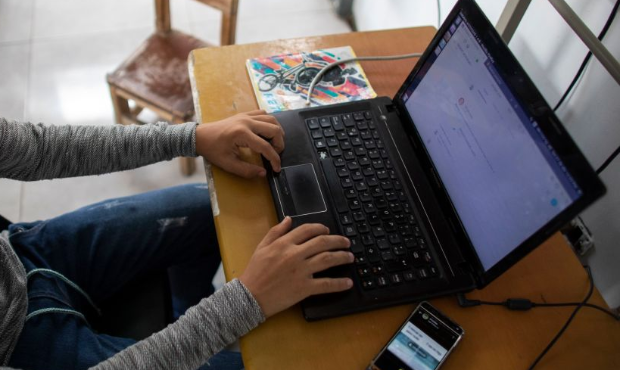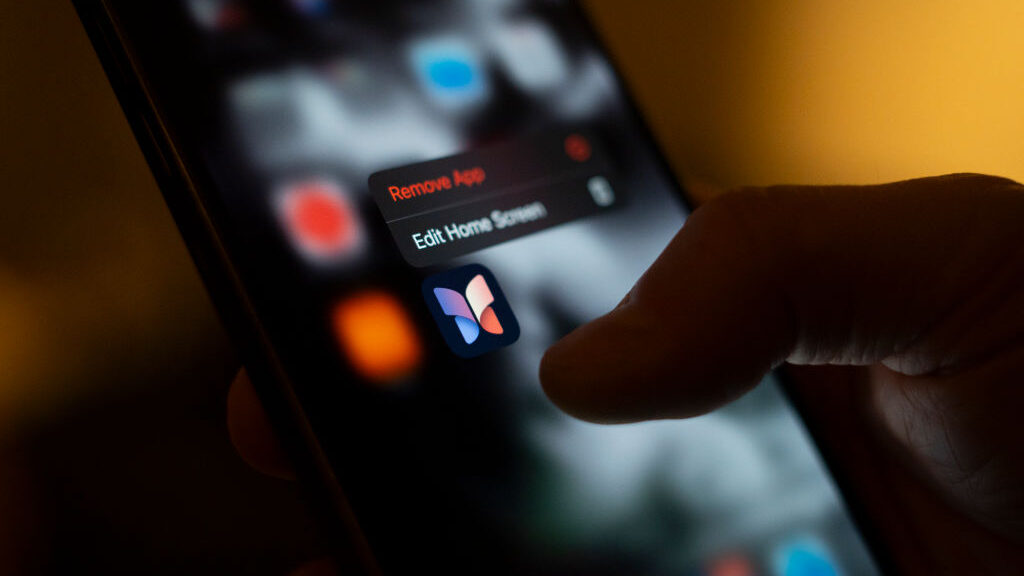Useful tech tips for protecting your smartphone’s privacy
Jul 20, 2020, 4:05 AM | Updated: 5:52 am

(Photo by Getty Images)
(Photo by Getty Images)
Your phone is your constant coronavirus companion. It’s there for news, entertainment, work, and communication. It’s more important now than ever to make sure your phone doesn’t have a digital virus. Tap or click here for the tell-tale signs your phone is infected with malware, a keylogger, or worse.
With everyone home, it’s hard to avoid that uncomfortable situation when a family member says, “Can I use your phone to look something up?” If you take a few moments now, it’s no big deal.
Share your phone with limits
Even if you have nothing to hide, maintaining digital privacy is important. You can restrict access using your phone’s built-in features.
On your iPhone, you can limit your loaned phone to let a person only use Safari. Go to Settings > Accessibility > Guided Access. Turn it on and set a passcode.
You can also choose to have a sound and notification for when the guided-access timer is running out. To try it out, open Safari, triple-click the home button and choose Guided Access. You can set a time limit if you like. Hit Start and it will lock your iPhone into just the Safari app. When done, triple-click the home button and enter your passcode to release the app.
For Android, open Security > Advanced > Screen Pinning. Let’s say your teenager wants to use your phone to check a movie’s IMDB rating. You open Chrome, touch the square button at the bottom-right of the screen, and look for the little blue pin icon on the Chrome window. Touch the pin to enable screen pinning. Your teen can use Chrome, but not any other apps until you unlock the phone with your passcode.
Android also offers Guest Mode, which puts another account on your phone. This way, the borrower has his own settings and it also hides your contacts, internet history, and personal data.
You can easily hide photos and videos. Tap or click here for the steps to keep private moments only available for your eyes.
The next time someone needs to use your phone, you’re digitally prepared.
Silence your notifications
When notifications pop up on the lock screen, it’s hard for someone not to read them. Keep your notifications private and safe from anyone peeking over your shoulder.
For your iPhone, head to Settings > Notifications > Show Previews. Here, you can choose to show them always, when the phone is unlocked, or never. The best compromise is to show notifications when you have unlocked your phone. You can also restrict some individual apps from showing notifications on your lock screen by heading into the Notifications settings, choosing the app, and adjusting the alerts settings.
For Android, go to Settings > Notifications Settings. Click the gear icon and touch “On the lock screen.” This gives you the option not to show any notifications, show all notifications, or hide just sensitive notifications. This last option will hide the content of an email or message notifications.
RELATED: I have a ton of helpful texting tricks on my site. iPhone users, tap or click here for a dozen iOS 13 tips. Android owners, tap or click to get the most out of upgrades to your Messages app.
A simple first step
Your roommate, spouse, or friend can’t snoop on your phone if there’s no opportunity to do it. Keep your phone on your person. Get in the habit of carrying it with you or keeping it in your pocket. Even if you’re vigilant, you’re still likely to leave your phone sitting out unattended around the house, so follow the next steps to help snoop-proof your device.
Put it on lockdown
Your most basic line of defense from prying eyes is to lock your phone. You may choose to use a passcode, a fingerprint, a pattern, or Face ID. The key here is to use them and not succumb to the temptation to leave your phone unlocked. Fingerprints and face scans are a particularly good idea since they can’t be overcome by just guessing them.
Check your settings to see how long your phone remains unlocked before it requires your passcode again. You may want to shorten this time to a matter of minutes to avoid leaving your phone vulnerable if you happen to walk away and leave it sitting out. It can be a little inconvenient to unlock your phone all the time, but it will help keep it secure from casual snoopers.
If you use a passcode, be sure it’s something that won’t be easily guessed. Don’t use your birthdate or another obvious set of numbers. Even better, use a long string of numbers. Both Android and iOS let you set passcodes with more than four digits. You’re not stuck forever with the same passcode, so change it up from time to time and ensure your privacy with some fresh numbers.
SECURITY MUST: Snoops aren’t the only ones you should be concerned with. Tap or click for 5 ways to keep hackers out of your financial accounts.
How you can tell if someone is using your phone
On an iPhone, open Settings, Screen Time and then tap See All Activity. You’ll see what apps were used and for how long.
On Android, open Settings, Device Care, and Battery. Among the stats, you’ll see a list of the apps used, time used, and total battery usage in percentages.
You have a right to privacy on your smartphone, but it’s up to you to prevent busybodies from poking through your digital life.
What digital lifestyle questions do you have? Call Kim’s national radio show and tap or click here to find it on your local radio station. You can listen to or watch The Kim Komando Show on your phone, tablet, television or computer. Or tap or click here for Kim’s free podcasts.












